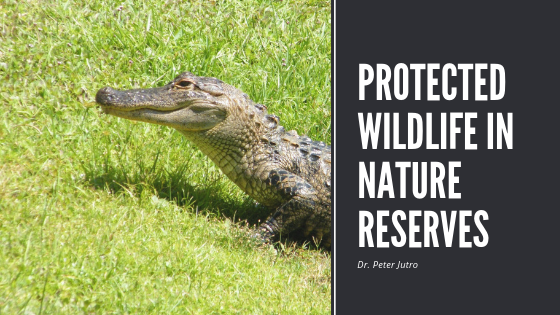In a previous blog, I suggested some local nature reserves to explore near my home in Virginia. Understanding what a nature reserve is and its importance to future generations will help in motivating the public to take more interest in them and to support them. These nature reserves or preserves are home to numerous flora and fauna. Many of them have made the U.S. Fish & Wildlife Service’s protected species list to help ensure their survival. Let’s take a look at some of the threatened or endangered wildlife in nature reserves on the east coast.
1) American Alligator — These reptiles are related to the crocodile and can be found in the southeast region of the U.S., including Florida, Georgia and North Carolina. They have made the list because of hunting, poaching and loss of habitat. Recently, a massive 20-foot long alligator was spotted at the Circle B Bar Reserve in Lakeland, Florida.
2) Piping Plover — A bird known for its small size and yellow legs, it searches gravelly beaches for food. Its survival is threatened due to human activity on beaches. The number of this species is dwindling and has almost disappeared from the Great Lakes region.
3) Hay’s Spring Amphipod — Resembling a shrimp, this crustacean can be found in the crevasses and cracks of freshwater springs. What is interesting is that they are blind due to living in dark, small spaces. They have been found in Washington, D.C.’s Rock Creek Park.
4) New England Cottontail Rabbit — Found in parts of New England and New York, this rabbit is the only rabbit native to New England. The population is low due to the loss of young forest habitats, which consist of brush, densely growing trees and shrubs. Development, timber harvesting and wildfires are just a few reasons why young forests aren’t plentiful. It’s important to note that certain wildlife lives in young forests during certain parts of their life cycles.
5) Swamp Pink – A pink, cone-like plant, the Swamp Pink is found in wetlands and seepage areas in freshwater swamps in New Jersey, Delaware, Maryland, Georgia, North Carolina and South Carolina. Its protection became necessary as a result of many factors, including development, trampling, collecting, timber operations and habitat degradation, (e.g. sewage treatment discharge).
The majority of the wildlife that is protected in nature reserves are birds, reptiles, insects, and amphibians. Each state in our nation has its own list of wildlife that needs to be protected. Unfortunately, the lists keep growing for a myriad of reasons. It’s not too late to become involved in helping some of these species and their habitats flourish.

